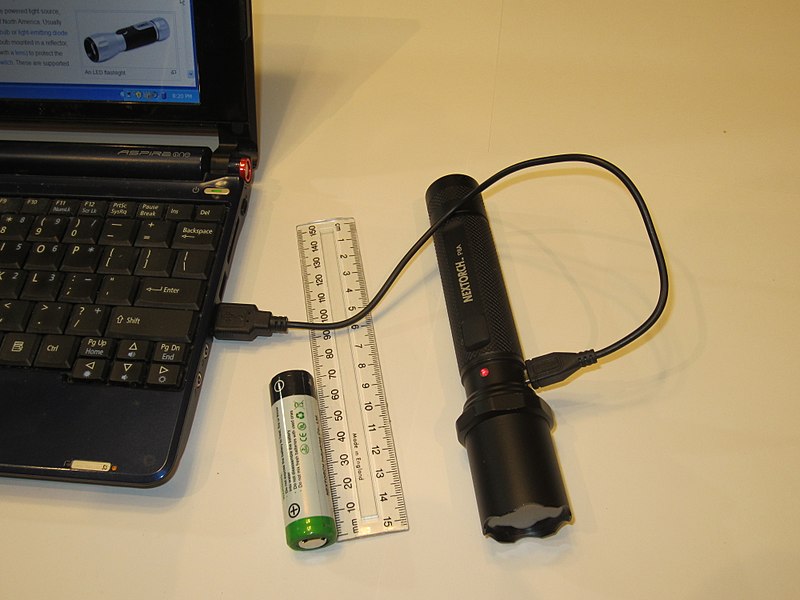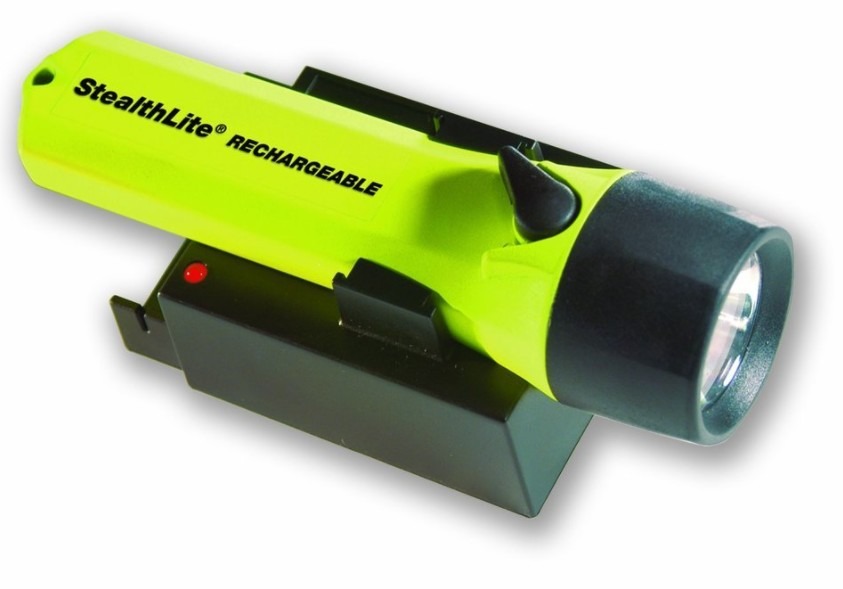Rechargeable flashlights come in handy anytime you need to bring light in emergency situations or any moment you need a strong portable lighting system like:
- Any moment you want to signal
- When you want to have a lighting system to complete a task
- When your current engagement requires optimal precision in controlling light
As you can see, it is essential to have the proper lighting in many situations. Here is what you must know about rechargeable flashlights to have the best results in these situations.
Rechargeable Batteries Provide Real Value Thanks To Innovation
Innovational advancements in light-emitting diodes (LED), battery efficiency, and effectiveness have presented the end consumers with convenient flashlights that are rechargeable, brighter, lighter, and smaller than the old-gen torches.
Unfortunately, the current market is full of rechargeable flashlights manufacturers and sellers who will never own up to their product inefficiencies. An internet search of the brightest flashlights brings thousands of results.
However, the product descriptions and reviews on these lists may be written by people that have never seen them. It isn’t a lie that some of these individuals have never claimed ownership of a rechargeable flashlight.
The Critical Attributes To Seek in These Rechargeable Flashlights
Rechargeable flashlights have gained popularity in the market because of their user-friendly attributes.
Here are the aspects to look for apart from brightness whenever you decide on purchasing a rechargeable flashlight:
- It must present with a far-reaching throw
- Reduced ongoing costs
- A universal charging system (USBs work best)
- Optimal lumen output
- The level of rechargeability must be convenient, sustainable, and easy
How Bright is a Rechargeable Flashlight?
A practical flashlight should be powerful enough to lighten a distance of 200 meters and over. Well, the degree of brightness of a rechargeable flashlight is a little bit relative and will depend on a range of factors.
Here are the factors that will determine the brightness of your rechargeable flashlight:
The Lumen Rating
The lumen rating is the measure of the brightness that your flashlight can deliver. Different flashlights come with varied lumen ratings, as shown in the list below:
- 1-20 lumens– Flashlights with 1 to 20 lumens will provide a brightness that’s only effective to find something in a keyhole as a small AAA-sized battery powers them.
- 20-150 lumens- It is very ideal for home usage and other outdoor activities in distances ranging between 20 and 30 feet.
- 150-200 lumens– They’ll give you an effective flashlight output as their brightness are designed to meet immediate and far-rage lighting needs.
- 200-500 lumens-They’re very useful for tactical tasks like sailing, hunting, fishing and ideal for workplaces and home settings. They’re designed for spot and floodlighting.
- 600-900 lumens– Very ideal for people who need long-range brightness in areas like deep caves.
- 900- 1000 lumens- It is very effective when you want to brighten large areas (up to 2000 feet) and appropriate for rescue operations.
- Over 2000 lumens (max)- These are the brightest rechargeable flashlights available in the market. They’ll brighten regions in the range of 2,500 feet.
In a nutshell, the lumen rate dictates the brightness of your rechargeable flashlights.
However, it is essential to note that even though the lumen rate matters, your flashlight’s brightness may also be dictated by other factors like the run time, the beam distance, the type of beam, and the type of bulb. Similarly, the regulated output and the focus may also dictate and show how bright your flashlights will shine.
Rechargeable flashlights’ main advantages

https://commons.wikimedia.org/wiki/User:Wtshymanski
Due to their convenient characteristics, rechargeable flashlights dominate the market. Rechargeable flashlights provide some key advantages, including:
- Bright lumen output
- Long-distance throw
- A larger capacity will result in longer battery life.
- Convenient, straightforward, and long-lasting rechargeability
- Rechargeable via USB
- Lower recurring costs
Extremely bright light is produced by rechargeable flashlights. One of our brightest rechargeable flashlights, for instance, has a maximum output of 12000 lumens. Maximum outputs for smaller rechargeable flashlights still hover around 1500 lumens. Even the tiniest rechargeable lights do not fall short in terms of lumen output. Our rechargeable flashlights not only shine brightly, but they also cast light a very long way.
Additionally, user-friendly handling characteristics are included in rechargeable torches. Each light has a simple on/off feature, and you can simply choose between several lighting modes for various lighting circumstances. Our rechargeable flashlights are excellent for both work and play because of their simple designs and brilliant brightness. Even some rechargeable flashlights are designed with tactical applications in mind. Always have the strongest light source available with one of the rechargeable flashlights, whether you use it for work or outdoor activities.
Cons of Rechargeable Flashlights
Owning a rechargeable flashlight has largely positive aspects, but there are also certain limitations and undesirable traits. These are the drawbacks:
- The majority of rechargeable flashlights are bigger.
- Require power to charge
- Greater upfront cost
- Expensive first battery purchase price
There are a few rechargeable flashlights that are smaller in size, but the majority of these flashlights are bigger, making them less portable than a tiny AA flashlight.
Most rechargeable flashlights’ constant need for charging is yet another drawback. Rechargeable flashlights constantly need electricity to recharge, unlike AA batteries, which you can always carry an additional pair of. You risk running out of light if you do not have a power source (USB-compatible standard outlet, portable power block, auto outlet, etc.) to replenish your rechargeable battery. Fortunately, the batteries in rechargeable flashlights have a high capacity, but they will eventually run out of power. If you are in the wilderness or off the grid, it might be annoying to have a battery that needs to be replaced but cannot be done so without a power source. Not to add, rechargeable batteries are far more expensive upfront than standard batteries.
AA flashlights vs. Rechargeable flashlights
Although AA and rechargeable flashlights both have advantages and disadvantages, each type of light has a specific use so you may always have the greatest light source available. The high-quality flashlights are made using practical power sources and are also brilliant, strong, and long-lasting, ensuring that you always have the most dependable flashlight. You will always have the finest and brightest light to handle all of your lighting demands, whether you buy a rechargeable flashlight or an AA flashlight.
Reasons why you should buy rechargeable flashlights and headlamps
Increased lumen output
Simply said, rechargeable lithium batteries are made for high-drain devices like torches and lanterns and have a larger power capacity than alkaline batteries. This enables rechargeable lights to have a much higher lumens output.
Rechargeable batteries cost less over time
The cost of purchasing rechargeable flashlights and headlamps is more than the cost of an alkaline battery. The rechargeable light eventually gets more affordable, though.
A regular alkaline headlamp that uses 3xAAA batteries and provides around 2,5 hours of illumination costs €2 for one battery change. The cost of batteries might reach €109,20 if you change them once a week for a year. In contrast, recharging an S4 rechargeable once a week for a year costs less than €1.
An S4 rechargeable costs €103,50 on some websites, which is less expensive than the cost of an alkaline battery each year.
Permanent Light Production
Most rechargeable products always give the best possible light output without harming the LED since it can deliver a consistent light output using rechargeable lithium batteries.
To get a longer runtime, several manufacturers build circuits to severely decrease the light. You have complete control over the amount of light produced and the battery life thanks to our constant current technology.
Greater environmental benefit
All batteries have the potential to harm the environment, however, rechargeable batteries have a considerably longer lifespan for each battery. Rechargeable battery use thereby spares the environment from the use of several single-use batteries.
Rechargeable batteries are designed for high-drain devices like flashlights and headlamps
Because lithium batteries have a relatively low internal resistance, they are ideal for devices like flashlights and headlamps that require a high, steady flow of electricity. However, alkaline batteries have relatively high internal resistance, making them ideal for low-power applications like remote controls. An alkaline battery’s high internal resistance will produce a lot of heat when it is quickly discharged. This is not the best situation for a headlamp or flashlight.
Alkaline batteries do have one significant benefit over rechargeable batteries, namely the faster rate of battery replacement. However, this issue may be resolved by carrying extra batteries that are fully charged or by selecting a light that uses the Dual Energy Concept, like the S-series. When the rechargeable battery is exhausted, the Dual Energy Concept enables the use of Alkaline batteries.
You may choose between rechargeable and alkaline batteries, but we would unquestionably contend that picking rechargeable will result in the greatest flashlight or headlamp.



